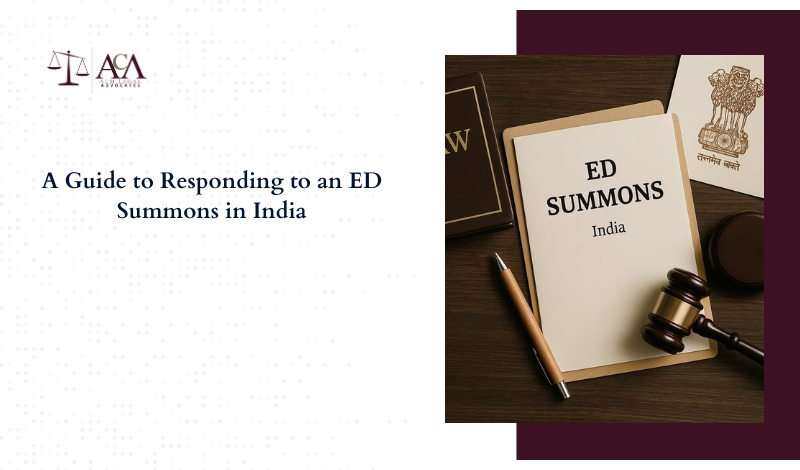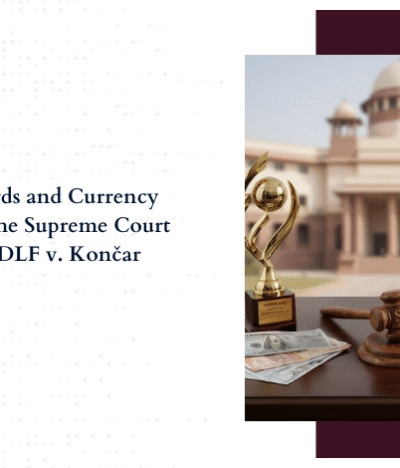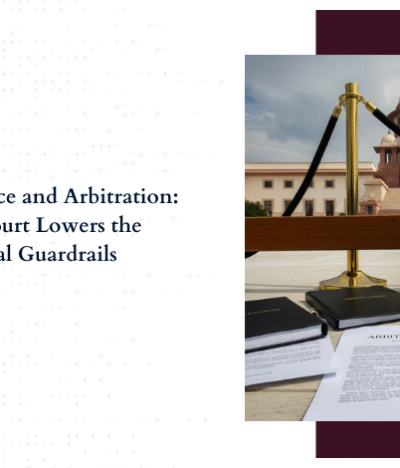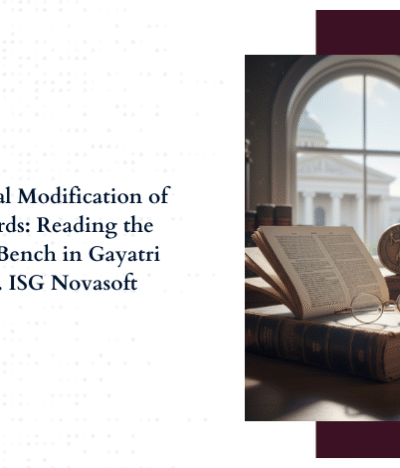Receiving a summons from the Enforcement Directorate (“ED”) under the Prevention of Money Laundering Act, 2002 (“PMLA”) or the Foreign Exchange Management Act, 1999 (“FEMA”) is a matter of urgent legal significance, not a mere formality. While issuance of such a summons does not imply guilt, non-compliance or missteps can lead to grave consequences. This article delineates the legal framework, procedural obligations, rights, and best practices for responding to an ED summons in India.
1. Legal Basis & Scope of the ED’s Summon Powers
1.1 Statutory Authority
Under Section 50 of the PMLA, ED officers possess civil-court powers to summon individuals for evidence or document production. Proceedings are deemed judicial and statements recorded under oath carry penal consequences for perjury. Under FEMA, Section 37 authorises analogous summoning powers. Failures to comply can result in penal consequences under Section 63 PMLA and Section 174 IPC.
1.2 ED vs. CrPC Safeguards
The Supreme Court in Abhishek Banerjee & Anr v. ED (Sep 2024) held that PMLA’s Section 50 prevails over CrPC limitations—summonses are not confined by territorial or gender-based restraints, and statements under oath are admissible judicial evidence.
2. Preliminary Steps Upon Receipt of a Summons
2.1 Do Not Ignore or Delay
Ignoring the summons constitutes non-cooperation and may lead to arrest by ED under Sections 19 & 63 PMLA. Multiple non-compliances can trigger a non-bailable warrant.
2.2 Scrutinise the Summons
Analyse whether the summons is issued under PMLA or FEMA, to an individual or entity, for appearance, document production, or both; and whether you are being treated as a witness or a suspect. These distinctions determine the scope of liabilities and applicable rights.
2.3 Engage Specialist Legal Counsel
Immediately retain counsel specialising in PMLA/FEMA and white-collar investigations. Specialist lawyers can decode the summons’s strategic implications and devise a compliant yet prudent response.
3. Documentary Response & Submission Protocol
3.1 Compile & Review Records
Identify all required materials—bank statements, tax filings, G/L entries, correspondence, ESOP documentation, etc. Cross-verify for accuracy and completeness.
3.2 Prepare a Structured Reply
Draft a point-by-point reply aligned with each clause of the summon. Affirm facts clearly, contest inaccuracies firmly, and preserve legal defenses. Under FEMA, replies are typically formatted as formal show-cause responses.
3.3 Timely Filing
Ensure submission within the specified timeframe. Late responses can be interpreted as evasive, leading to adverse inference or coercive action.
4. Appearing Before the ED: What to Expect
4.1 Know the Purpose of Summoning
The Enforcement Directorate may summon you for different purposes:
- As a witness under Section 50(2) PMLA to provide information.
- As a suspect or accused under ongoing money laundering or FEMA contravention proceedings.
In either case, your statements will be recorded under oath. If you are a suspect, you are not entitled to remain silent like in CrPC proceedings, and any falsehood may attract prosecution under Section 193 IPC (false evidence in judicial proceedings).
4.2 Statement Recording Protocol
Statements are recorded in a question-answer format, typed in English or Hindi. You must review each response carefully before signing. Avoid speculative answers, opinions, or guesswork. Ask for copies of your signed statement for future reference.
4.3 Right to Legal Representation
As per current jurisprudence, a lawyer may accompany the summoned person but may not be present in the room during questioning. However, you may seek legal consultation before and after your appearance. In exceptional cases, especially for women or vulnerable individuals, legal presence in proximity may be sought through court orders.
4.4 Non-Cooperation Has Consequences
Refusing to answer, concealing material facts, or being evasive may prompt ED to initiate arrest or attach assets under Section 17 or 19 PMLA. Repeated non-appearances may lead to a Look-Out Circular (LOC), property searches, or even custodial interrogation.
5. Rights of the Summoned Individual
5.1 Right Against Self-Incrimination
While PMLA proceedings are not strictly criminal at the summons stage, Article 20(3) of the Constitution ensures protection against self-incrimination. If you are directly implicated, your legal team may request an exemption from answering certain questions or move the High Court under Article 226 for relief.
5.2 Protection Against Arbitrary Action
Summons must be issued with proper cause and jurisdiction. Any abuse of process—such as harassment, coercion, or repeat summons without justification—can be challenged legally.
5.3 Right to Silence in Select Contexts
If the line of questioning breaches the boundary of statutory inquiry and becomes accusatory in nature, you may choose to remain silent on advice of counsel. However, selective silence may be viewed adversely unless lawfully justified.
6. Filing a Legal Challenge, If Required
6.1 Filing a Writ Petition
If the summons appears to be mala fide or jurisdictionally improper, a writ petition under Article 226 of the Constitution can be filed before the High Court. The courts have entertained such petitions, particularly in cases where:
- The ED acts beyond the statutory scope;
- The summons is issued without any registered ECIR (Enforcement Case Information Report);
- There’s an overlap with ongoing criminal proceedings under CrPC without clarity of roles.
6.2 Seeking Interim Protection
The High Court may grant protection from arrest or coercive action if a prima facie case of abuse of power is established. However, courts generally lean towards cooperation with investigative authorities and grant relief sparingly.
6.3 CBI/ED Joint Action
In some cases, ED acts on leads generated by the CBI or the Income Tax Department. Ensure your legal counsel evaluates the broader landscape of connected agencies to anticipate multiple summons or raids.
7. Best Practices for Dealing with ED Summons
7.1 Respond Promptly and Transparently
Timely compliance with the summons is essential. Delay or avoidance can trigger coercive steps, including arrests or property attachment. Submit documents in an indexed, paginated manner, preferably with a covering letter from your legal counsel.
7.2 Maintain Consistency in Statements
Discrepancies in statements made across multiple dates or conflict with documentary evidence can form the basis of criminal prosecution. Ensure full coordination between your legal team, chartered accountants, and senior management in case of corporate summons.
7.3 Avoid Destruction or Tampering of Evidence
Preservation of digital and physical records is critical. Any destruction, concealment, or tampering with relevant material can be treated as obstruction of justice and may attract additional charges.
7.4 Preserve Copies and Records
Always maintain copies of summons, statements made, documents submitted, and acknowledgement receipts. In case of future proceedings or litigation, this record will be your primary legal defence.
Frequently Asked Questions
1. What are my legal obligations upon receiving an ED summons under the PMLA or FEMA?
Under Section 50 of the Prevention of Money Laundering Act, 2002 (PMLA) and Section 37 of the Foreign Exchange Management Act, 1999 (FEMA), a summoned individual is legally obligated to appear in person before the Enforcement Directorate at the specified date and time. The person must also produce the documents or evidence requisitioned. Non-compliance can attract penal provisions including fines, issuance of arrest warrants, or prosecution for obstruction of justice under Section 63 PMLA or Section 174 IPC.
2. Can I be arrested merely on the basis of a summons issued by the ED?
No, the issuance of a summons itself does not amount to arrest. However, if the ED believes that the person is evading cooperation or is involved in a scheduled offence under PMLA, it may proceed to arrest the individual under Section 19 of PMLA, provided it records “reason to believe” and complies with legal safeguards. In such cases, the arrested person must be produced before a Special Court within 24 hours. Prior arrest is not routine and must be justified under judicial scrutiny.
3. Am I entitled to legal counsel during ED interrogation?
You have the right to consult an advocate, but unlike in criminal investigations governed by CrPC, your counsel may not be allowed to remain present during the actual recording of your statement under PMLA proceedings. The ED draws its power from civil court procedures under Section 50, and Indian jurisprudence—most notably the Vijay Madanlal Choudhary and Abhishek Banerjee rulings—has limited the role of counsel during interrogation, though proximity access may be sought via High Court orders in exceptional cases.
4. Can the summons be challenged in court if I believe it is arbitrary or mala fide?
Yes. A summons that is issued without jurisdictional basis, in the absence of an ECIR (Enforcement Case Information Report), or in excess of statutory authority can be challenged via a writ petition under Article 226 of the Constitution before the concerned High Court. Courts are cautious in intervening in investigative processes but have recognised the right to challenge abuse of process, harassment, or lack of procedural compliance.
5. What precautions should I take while appearing before the ED to record my statement?
You must ensure that your statement is factually accurate, internally consistent, and aligned with available documentary evidence. Avoid conjecture, ambiguity, or misleading declarations—statements recorded under PMLA are admissible as judicial evidence and can be used against you or third parties. It is prudent to review each line of the recorded statement carefully before signing, and to keep certified copies for the record. Legal strategy should be planned in advance in consultation with competent white-collar criminal law counsel.
Conclusion
Responding to an ED summons in India necessitates a calibrated legal approach—compliance without compromise, assertion without defiance. The process can be legally taxing and reputationally damaging if mishandled. An early, informed, and coordinated response through qualified counsel can mitigate risk, ensure procedural safeguards, and preserve your legal rights.
Whether you are summoned as a witness, suspect, or representative of a company, understanding your obligations and protections under the PMLA and FEMA framework is the key to navigating this complex process.
- Abhishek Banerjee & Anr v. ED (Sep 2024) – https://indiankanoon.org/doc/191493201/






